Ancient Roman roads are one of the most impressive infrastructure achievements of the classical world. At the height of the empire, over 250,000 miles of these roads were built, allowing for efficient movement of armies, goods, and information across vast territories. The design of these roads combined durability with strategic connectivity, setting standards that influenced future generations.
Modern transportation networks are essential for global economies and everyday life. Efficient roads, highways, and transit systems connect cities and regions, supporting trade, travel, and communication on an unprecedented scale.
How Ancient Roman Roads Shaped Modern Transportation Networks is a story of engineering innovation and lasting impact. The principles behind Roman road construction—such as strong foundations, precise surveying, and route optimization—continue to inform modern practices.
The influence of ancient Rome goes beyond just roads. Historical figures like Scipio Africanus have shaped history through their military strategies during crucial moments like the Second Punic War. The legacy of the Roman Empire is vast, encompassing a period marked by significant political and cultural shifts, which still resonate today.
Moreover, the lasting impact of legal frameworks established during this time, such as those found in the Corpus Juris Civilis, demonstrates how foundational concepts of infrastructure endure and evolve over time.
Even in today’s digital age, where virtual worlds like Second Life offer immersive experiences into historical settings such as ancient Rome, the principles of Roman engineering and infrastructure remain relevant. Understanding these ancient techniques reveals not only their historical significance but also their lasting impact on modern practices.
The Engineering Marvel of Ancient Roman Roads
Ancient Roman roads are a remarkable example of the skill and engineering expertise of the Roman civilization. The Romans used advanced methods in building roads that were far superior to anything else at the time, setting the stage for today’s transportation systems. Here are some key features that demonstrate the incredible engineering of Ancient Roman roads:
1. Advanced Techniques
The Romans employed strong foundations and complex drainage systems in their road construction. By ensuring solid bases and effective water management, they built long-lasting roads that could handle heavy traffic and various weather conditions.
2. Importance of Surveying
A critical aspect of Roman road building was careful surveying to find the best routes. This practice is still important today in modern road engineering, highlighting the significance of proper planning and alignment for efficient transportation networks.
3. Materials and Methods
The Romans used different materials to construct their roads, including stones, sand, and gravel sourced locally. This sustainable approach not only lowered construction costs but also contributed to the durability of the roads.
The legacy of Roman road-building techniques continues to influence contemporary infrastructure development, underscoring the timeless principles of sturdy foundations, strategic planning, and resource efficiency in road construction practices worldwide. This legacy is part of a broader spectrum of Roman architecture, which includes not just roads but also bridges, aqueducts, and buildings that showcase their architectural mastery.
Moreover, the religious practices intertwined with every aspect of Roman life often influenced their engineering projects. From the early days of the Roman Republic to the expansive reach of the Empire, religion served as a cornerstone of Roman identity.
Lastly, understanding Roman law is crucial as it has played a significant role in shaping modern legal systems. Its principles are still relevant in various legal systems today, showcasing another layer of the profound impact that ancient Rome has had on contemporary society.
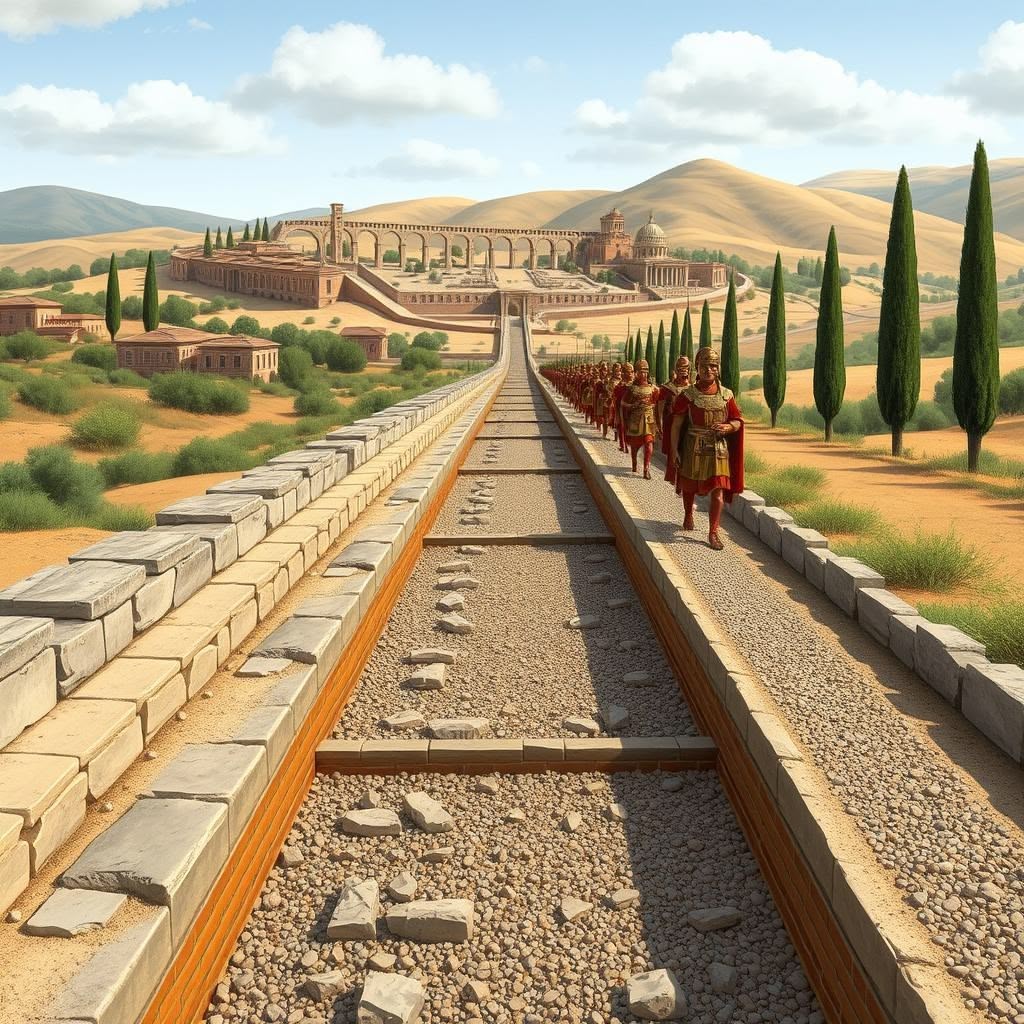
Categorization and Maintenance of Roman Roads
Ancient Roman roads, often referred to as the backbone of the empire, were classified into different categories based on their purposes and funding sources:
1. Public Roads
These were funded by the government and served as essential connections between cities, facilitating trade, communication, and administration within the empire. Public roads were maintained through taxes paid by the citizens, tolls collected at specific points along the road, and sometimes donations from wealthy individuals who sought to leave a lasting legacy or gain favor with the authorities.
2. Military Roads
Built primarily for strategic military purposes, these roads allowed for rapid troop movements across the empire. Often closed to civilians, military roads were crucial for maintaining control over vast territories and ensuring swift responses to threats. Their construction and maintenance were financed by the state to support military campaigns and reinforce imperial authority in distant regions. The Roman Army, a symbol of military power, played a crucial role in achieving victories across large areas which was facilitated by these roads.
3. Local or Private Roads
Typically made of more rudimentary materials like dirt or gravel, these roads were constructed by local communities or private individuals to connect rural areas with urban centers or neighboring settlements. While not as durable or well-maintained as public or military roads, they played a vital role in facilitating local trade, transportation, and social interactions.
Maintenance practices for Roman roads were essential to ensure their longevity and usability:
- Regular inspections conducted by appointed overseers helped identify areas in need of repair due to wear and tear, weathering, or structural damage.
- Repairs were carried out promptly to prevent deterioration and maintain the road’s functionality for travelers and merchants.
- Techniques such as repaving sections with fresh stones, reinforcing foundations, clearing debris from drainage systems, and erecting new mile markers ensured that Roman roads remained safe and efficient for centuries.
The categorization and maintenance of Roman roads reflect the empire’s commitment to developing a comprehensive transportation network that supported its economic prosperity, military dominance, and cultural connectivity across vast territories.
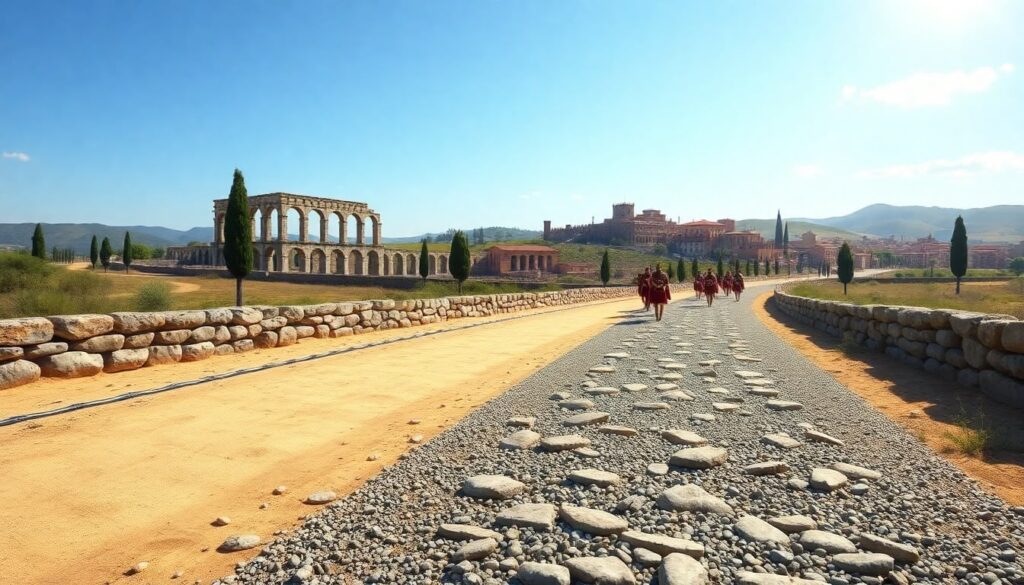
Influence on Modern Road Engineering
The engineering skills used to build Ancient Roman roads still have an impact on how we construct roads today. Some key principles that remain important in modern road building include:
- Strong Foundations: Roman engineers created a solid base for their roads by using multiple layers of stone and sand. This design helped distribute the weight evenly across the surface. Similarly, modern highways also use multi-layered foundations with materials like crushed rock and gravel to support heavy traffic loads. By doing so, we can minimize cracking and deformation over time, ensuring that our roads last longer even with heavier vehicles compared to ancient times.
- Drainage Systems: To prevent erosion and structural damage, proper water management was crucial for Roman roads. They implemented various techniques such as curbs, ditches, and cambered surfaces to direct rainwater away from the road. Today, we have adopted these drainage concepts but with advanced materials like permeable asphalt and engineered gutters. This helps us reduce water accumulation on the roads, which can lead to potholes or weakening of the pavement structure.
- Utilization of Local Materials: Romans understood the importance of using locally sourced stones and aggregates for their road construction projects. This not only ensured durability but also made it easier to obtain the materials without incurring high transportation costs. The same principle is now being embraced by sustainable road engineering practices. Modern projects are increasingly focusing on sourcing materials from near construction sites in order to lower carbon footprints while still meeting quality standards.
These techniques show us how How Ancient Roman Roads Shaped Modern Transportation Networks goes beyond just being an interesting historical topic. It actually reveals practical engineering solutions that have been adapted over time and are now forming the foundation of reliable and cost-effective road systems all around the world.
Furthermore, Roman engineering is significant not only for its construction methods but also for its role in promoting effective governance and cultural exchange across large areas. This aspect becomes particularly relevant when we examine the structure of power during the Roman Republic era—a period marked by a shift from monarchy to a complex political system. Understanding this transition is crucial in comprehending the intricacies of Roman governance and its lasting influence on contemporary political frameworks.
In addition to engineering and governance, Roman mythology also plays a significant role in shaping modern culture by reflecting societal norms and political aspirations.
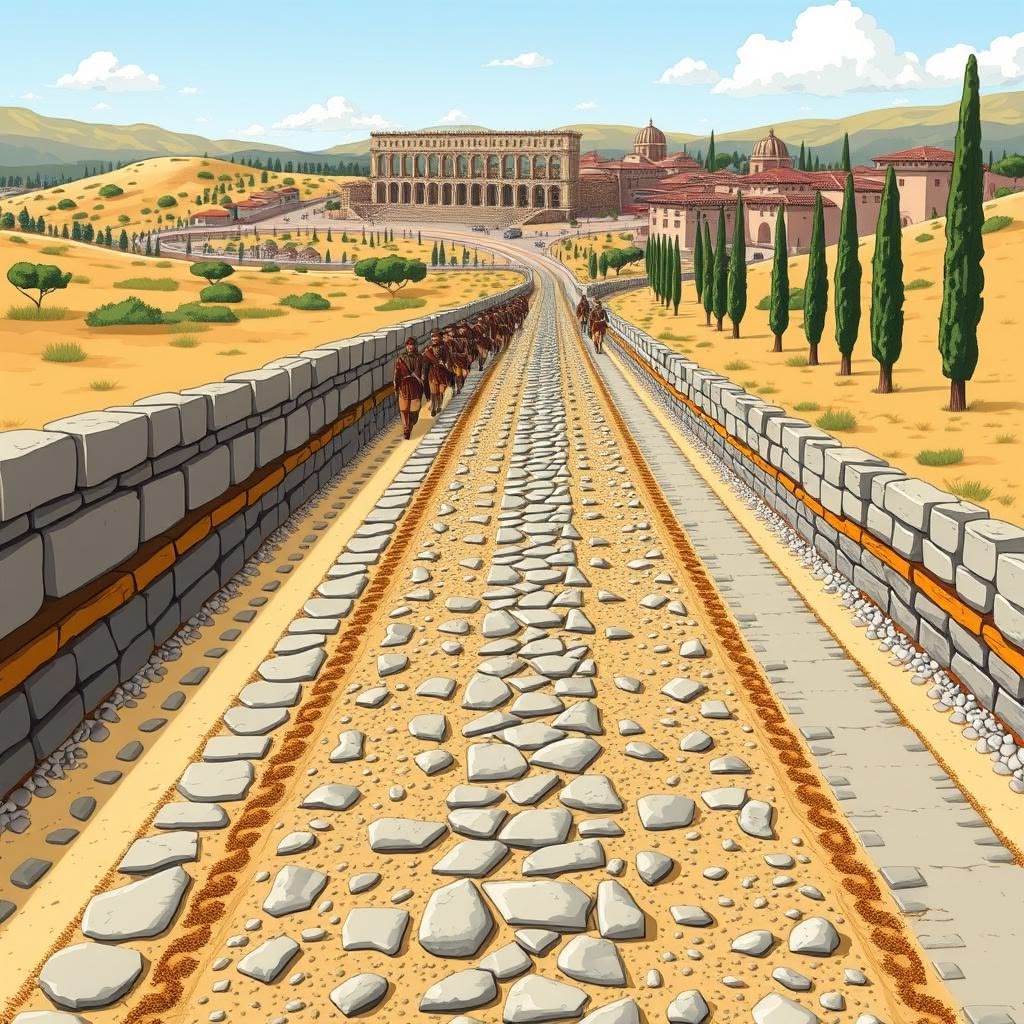
Urban Infrastructure and Connectivity: Lessons from Ancient Rome
The Enduring Impact of the Via Appia
The Via Appia, known as the “Queen of Roads,” stands as a testament to Roman engineering prowess and historical significance. This iconic Roman road, stretching over 350 miles from Rome to Brundisium, showcases the enduring impact of ancient road-building techniques on modern urban infrastructure:
1. Case Study of Via Appia
The Via Appia, constructed in 312 BC, exemplifies the engineering excellence of the Romans. Its strategic route connected Rome to the southeastern regions of Italy, facilitating trade and military movements. The durability of Via Appia’s construction, a result of ingenious Roman engineering, has allowed remnants of this road to endure for centuries, underscoring its historical importance.
2. Influence on Modern Urban Planning
The layout and design principles of Roman roads continue to influence modern urban planning strategies. The emphasis on efficient connectivity between cities echoes the need for well-connected transportation networks to support economic growth and societal development. This is particularly evident when considering how the role of agriculture in ancient Rome was intertwined with these road networks, facilitating trade and contributing significantly to Rome’s economic growth.
Insights into Ancient Engineering Practices
By delving into the legacy of the Via Appia and the broader impact of Roman road layouts on urban infrastructure development, we gain valuable insights into how ancient engineering practices have shaped modern cities and transportation networks. Furthermore, understanding the social dynamics during this period can provide a more nuanced perspective on how these infrastructures supported different social classes in their daily lives. Additionally, exploring the legal status of women in ancient Rome reveals another layer of complexity regarding gender dynamics during this era.
Overall, the journey through ancient Rome offers a rich tapestry of history that continues to influence our present-day urban landscapes.
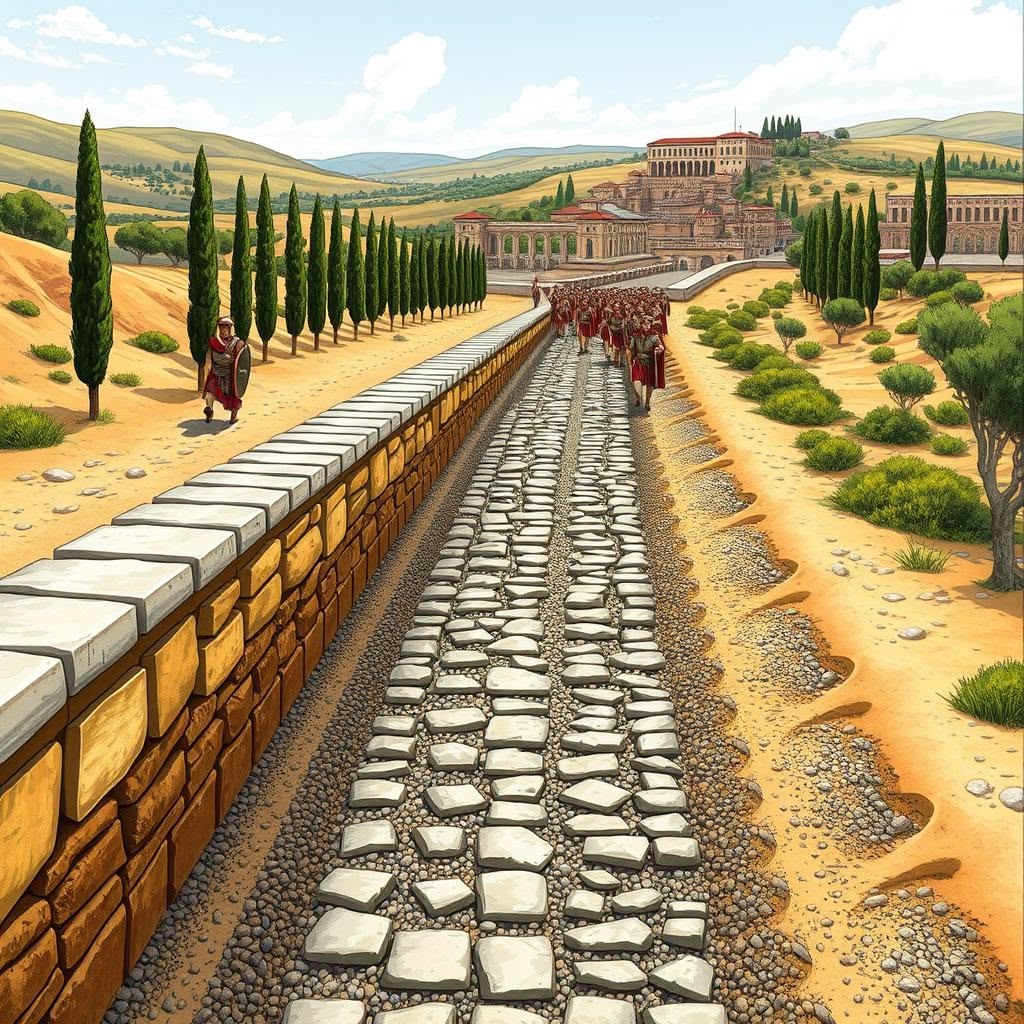
Contemporary Reflections of Ancient Roman Roads in Modern Cities
In cities like Rome, remnants of ancient roads still exist, with cobblestone sections preserved as a nod to history. These historical aspects are not just for aesthetic purposes; they also serve a practical function. The ancient cobblestones are often combined with asphalt for smoother rides, showcasing an integration of different materials that enhances the efficiency of transportation systems.
This blend of materials reflects a balance between durability and cost-effectiveness, reminiscent of the way the Twelve Tables shaped Roman legal systems by providing structure and stability. The presence of these ancient road remnants is more than just a historical reference; it is a testament to the enduring influence of Ancient Rome on Western civilization.
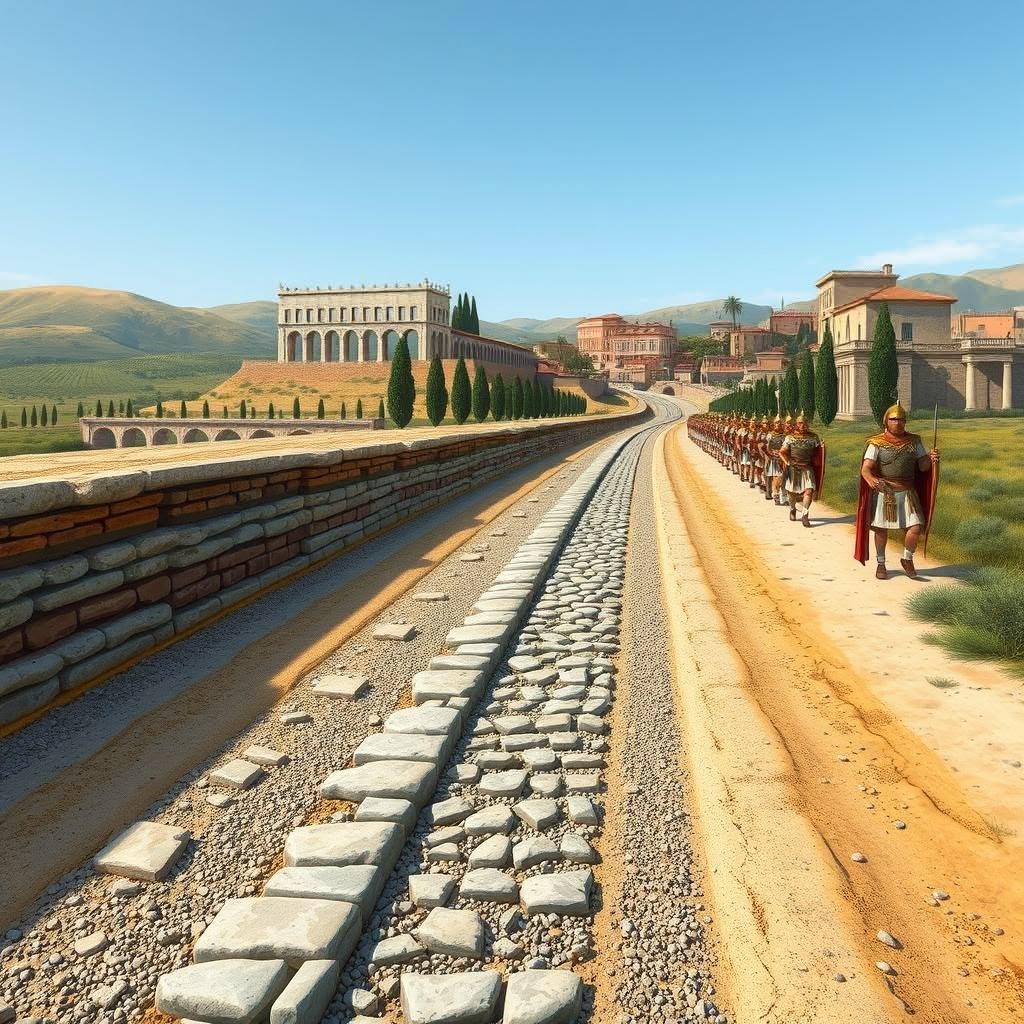
Conclusion
Ancient Roman roads laid the foundation for modern transportation networks by establishing pioneering engineering standards that remain relevant today. Their emphasis on:
- Strong, durable foundations
- Effective drainage systems
- Use of locally sourced materials
set a benchmark for road construction quality and sustainability. Strategic route planning was central to their design, ensuring efficient connectivity across vast territories. This facilitated trade, military movements, and urban development—functions mirrored in contemporary infrastructure.
Roman roads influenced modern practices such as:
- Careful surveying to optimize routes
- Regular maintenance protocols
- Integration of diverse materials for balanced durability and cost-efficiency
Understanding how Ancient Roman roads shaped modern transportation networks reveals the lasting legacy of Roman innovation. Their techniques and principles endure not only in physical remnants but also in the planning and engineering philosophies guiding today’s roads worldwide. This enduring legacy is reflective of a broader trend in Roman society where practical innovations were often intertwined with philosophical thought, such as the rise of Stoicism which emphasized living in harmony with nature and using reason – principles that resonate with sustainable engineering practices we strive for today.

